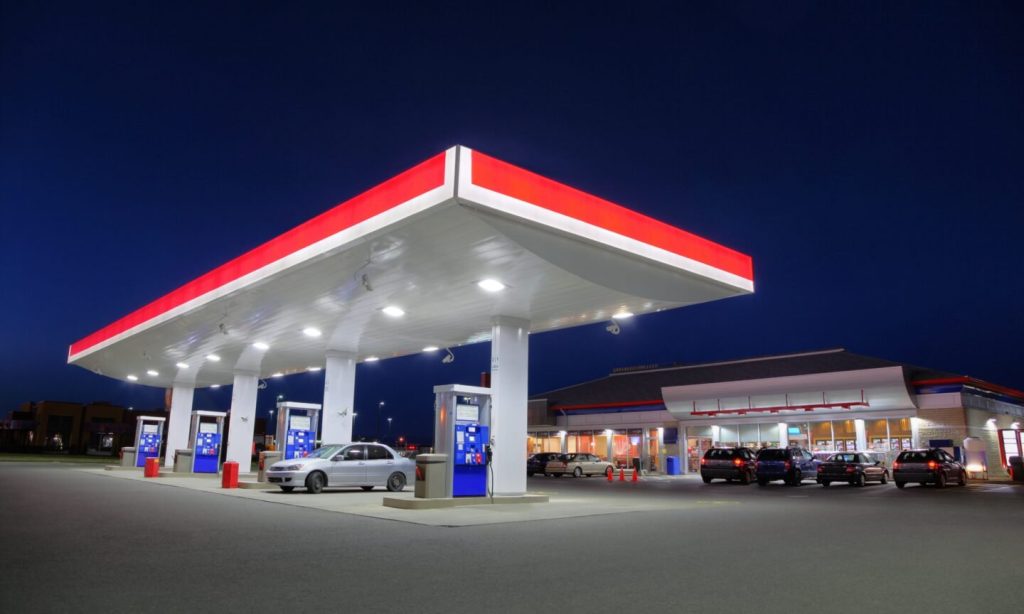Down a few cents, then up a dollar — and always at the worst time — gas prices can be a pain because they feel so fickle. But while it might seem that way, they rarely change on a whim. Rather, gas prices take into account a complex set of global factors that are at work long before the gas gets to your local station.
According to the U.S. Department of Energy, those factors include:
-
The cost of raw crude oil, which fluctuates based on international supply and demand.
-
The cost to refine crude oil into gasoline, which rises during warmer months.
-
Taxes, which vary state-to-state.
Get started with budget planning
Check your current spending across categories to see where you can save
Here’s how each of those factors and others hold sway over the price you pay at the fuel pump.
Crude oil prices
Crude oil prices depend on global supply and demand dynamics. Prices might become more volatile when geopolitical events or severe weather impact — or threaten to impact — the oil supply chain. For example, oil prices shot up when Russia invaded Ukraine in 2022, and have stayed elevated ever since. That’s the primary reason gas prices are so high right now.
Barring those unexpected events, oil prices go up or down based on global demand for oil, as well as production decisions made in countries that export crude.
The U.S. is the top oil-producing country in the world, giving it some sway in the global market. But it is far outweighed by the Organization of Petroleum Exporting Countries, which makes production decisions for all its 12 members. Together, OPEC members produce the most oil and hold the largest share of oil reserves. With that level of control on oil supplies, OPEC has ample power to fluctuate oil prices by controlling the amount of oil flowing into the market.
The crude oil used to produce gas in the U.S. is a mix of imported and domestic. The primary sources of imported crude oil in the U.S. are from Canada, Mexico, Saudi Arabia, Iraq and Colombia. Russia was on that list until March 2022, before the war in Ukraine.
Refining oil into gas
Crude oil must be refined to produce fuel that can be sold to consumers. This conversion is done in petroleum refineries.
The cost of refining changes throughout the year and varies by region. That cost also depends on the type of crude oil used; the ingredients blended into the fuel; the formulation that must be used in each region to meet air quality standards; and the processing technology used at each refinery.
Taxes
The retail price of gas also takes into account any federal, state and local taxes. The federal gas tax adds 18.4 cents per gallon to the price of gas. And state gas taxes add another 32.6 cents per gallon, on average, according to a SS analysis of U.S. Energy Information Administration data.
State tax rates vary widely. California’s rate (69.8 cents per gallon) and Illinois’s rate (67.1 cents) are highest, followed by Pennsylvania (58.7 cents). Alaska has the lowest state tax (9 cents per gallon), followed by Mississippi (18.4 cents) and Hawaii (18.5 cents).
Gas grade
There are four types of fuel available at the pump that will differ in price. The three non-diesel types of gasoline — regular, midgrade and premium — are categorized by octane rating, a measure of fuel stability (the pressure at which a fuel will combust in an engine).
-
Regular: The least expensive.
-
Midgrade or super: More expensive than regular but cheaper than premium and diesel.
-
Premium or super premium: Most expensive non-diesel gasoline.
Distribution, marketing and retail
The cost and profits of getting fuel to consumers also affect the price of gas. Once crude oil is refined and becomes gasoline, it is shipped via pipeline to terminals where it can be blended to meet local standards. From terminals, it is delivered via tanker truck to retail gas stations where you buy your fuel.
The marketing and individual retailer costs — by chains or independent stations — will be further passed on to the consumer. Rent, traffic patterns, wages, equipment, insurance, local taxes and operational fees are also factors that will affect the price retailers will charge for gas.
An example: Why California gas prices are so high
California tends to have the highest gas prices in the country because of the state’s environmental regulations, taxes and unique self-reliance on refining its own gasoline.
Did you know that the gasoline sold in California is different from gasoline sold anywhere else in the United States? Since the ‘90s, California has mandated that any gasoline sold in the Golden State be produced according to strict guidelines that reduce the gasoline’s overall emissions. As you might expect, California’s cleaner fuel blend is more expensive than the gasoline used by the rest of the nation.
Because of these regulations, more than 90% of gasoline used in California is refined in the state, according to the California Energy Commission. So, if any of the state’s refineries experience unplanned outages or disruptions, those gas prices climb even higher, since the state can’t boost its gasoline supply by importing dirtier fuel that wasn’t refined according to its regulations.
Also, gas prices are high in California because there’s just less gasoline being refined in the state. In late 2022, California mandated that all cars, trucks and SUVs sold in the state be zero-emission vehicles by 2035. Because of that, California’s refining industries are beginning to transition away from fossil fuels, according to The Hoover Institution, a public policy think tank at Stanford University.
Finally, taxes contribute to the state’s gas prices. Drivers in California pay 69.8 cents per gallon in state taxes — the highest state tax rate in the country.
